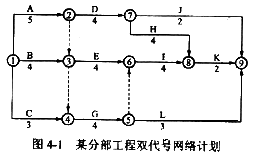Everyday, 340 million people speak it. One billion people are learning it and it is said that by 2050, half of the world’s population will be using it. What are we talking about? That global language—English.
The English language started in Britain in the 5th century. It is a mixed language. It was built up when German. Scandinavian and French invaders settled in England and created a common language for communication.
Today it is the official language of the UK, the USA, Australia, New Zealand, Canada, South Africa and Ireland as well as many islands in the Caribbean . Many other countries and regions use it for politics and business, for example, India. Pakistan, Nigeria and the Philippines. English is also one of the official languages of Hong Kong.
But global advertising and pop music mean that in most countries, you will see or hear some English. Thanks to McDonalds, we all know about "burgers". "fries" and "milkshakes". Songs by Madonna, Britney Spears and Celine Dion are in English. We can sing along, even if we do not understand what we are singing!
English is a messy (杂乱的) language. Every year, dictionaries include new words that talk about popular culture, for example, computer-related words such as "blogging", "download" and "chatroom". Also included are words that teenagers use. Who does not know "cool", "OK" and “hello” ?
Other languages also influence English. Many English words come from French. Words like "cafe" and expressions like "c'est la vie" (that is life) are all part of the English language. On the other hand, the French language includes English words like "le weekend" and "le camping". German words are also part of English. Words like "kindergarten" come from the German language.
Recently, British people have become interested in "yoga". But the word comes from an ancient Hindu language in India.
小题1:The English language has a history of ______.
A.over 2000 years
B.over 500 years
C.over 1500 years
D.over 1000 years小题2:The underlined expression “thanks to ” can be replaced by ______.
A.because of
B.thankful to
C.not until
D.as if.小题3:Which of the following statements is true about the language of English ?
A.It has been changing all the time.
B.It has borrowed words from all the other languages.
C.French words are used by the English because dictionaries have French words.
D.Singers and film stars have the greatest influence on language.小题4: Many countries and regions use it for politics and business except______.
A.the USA
B.Nigeria
C.the Philippines
D.Norway
小题1:C
小题2:A
小题3:A
小题4:D

